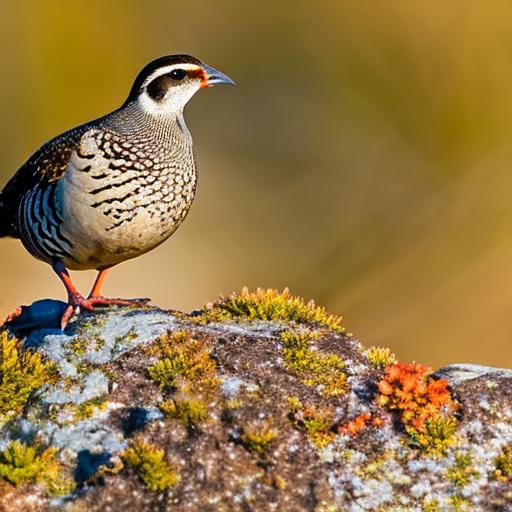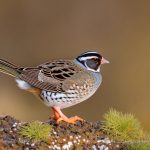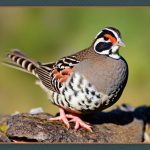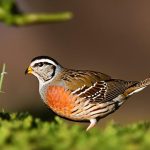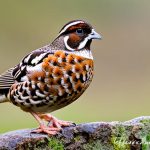The Californian quail, also known as the Valley quail, is a small ground-dwelling bird native to the western United States. These birds are known for their striking appearance, with a distinctive teardrop-shaped plume on their heads and a vibrant chestnut and black pattern on their bodies. They are popular among bird enthusiasts and hunters alike for their beauty and game bird status.
Californian quails are social birds that thrive in small flocks, making them a popular choice for aviaries and backyard enthusiasts. They are relatively easy to care for and can adapt well to a variety of environments, making them a great choice for both experienced and novice bird keepers. With the right care and attention, Californian quails can live up to 5-7 years in captivity, providing years of enjoyment for their keepers.
Key Takeaways
- Californian quails are small, ground-dwelling birds native to the western United States.
- They require a spacious and secure enclosure with plenty of hiding spots and perches.
- A balanced diet of seeds, insects, and greens is essential for their health and well-being.
- Breeding Californian quails requires careful monitoring of nesting behavior and providing a suitable nesting area.
- Regular health check-ups and access to a qualified avian veterinarian are crucial for maintaining the well-being of Californian quails.
Housing and Enclosure Requirements
When it comes to housing Californian quails, it’s important to provide them with a spacious and secure enclosure that mimics their natural habitat. A large aviary or outdoor pen is ideal for these birds, as it allows them plenty of room to roam and forage. The enclosure should be at least 10 square feet per bird to ensure they have enough space to move around comfortably.
It’s important to provide plenty of hiding spots and shelter within the enclosure, as well as areas for dust bathing and perching. This can be achieved by incorporating natural vegetation, such as shrubs and grasses, as well as artificial structures like wooden boxes or platforms. Additionally, the enclosure should be predator-proof, with sturdy fencing and secure locks to keep out potential threats.
In terms of flooring, a natural substrate such as sand or soil is best for Californian quails, as it allows them to exhibit natural behaviors like scratching and dust bathing. Regular cleaning and maintenance of the enclosure are essential to ensure the birds’ health and well-being. Overall, providing a spacious and enriching environment is key to keeping Californian quails happy and healthy in captivity.
Feeding and Nutrition
Californian quails are omnivorous birds that require a varied diet to meet their nutritional needs. In the wild, they primarily feed on a mix of seeds, grains, insects, and vegetation. In captivity, it’s important to replicate this natural diet by providing a high-quality game bird feed supplemented with fresh fruits, vegetables, and protein sources.
A commercial game bird feed with around 20-24% protein content is ideal for Californian quails, as it provides the essential nutrients they need to thrive. Additionally, offering a mix of fresh greens such as kale, spinach, and dandelion leaves can help supplement their diet with essential vitamins and minerals. Insects and mealworms can also be offered as a protein source, either live or dried.
It’s important to provide access to clean, fresh water at all times, as quails can quickly become dehydrated if water is not readily available. Water should be provided in shallow dishes or containers that are easy for the birds to access. Additionally, offering grit or small stones can help aid in the birds’ digestion by grinding up their food in their gizzards.
Breeding and Reproduction
Breeding Californian quails can be a rewarding experience for bird enthusiasts, but it requires careful planning and attention to ensure success. Quails typically reach sexual maturity at around 10-12 weeks of age, at which point they will begin to display courtship behaviors such as calling, strutting, and preening. It’s important to provide a suitable nesting area within the enclosure, such as a shallow depression lined with soft bedding material.
Once a pair has formed a bond, the female will begin laying eggs at a rate of around one egg per day until she has laid a full clutch. It’s important to provide a quiet and secluded area for the female to lay her eggs, as disturbances can cause her to abandon the nest. The eggs should be collected daily and either placed in an incubator or left with the parents to hatch naturally.
Incubating quail eggs requires careful temperature and humidity control, typically around 99.5°F and 60% humidity. The eggs will hatch after approximately 21 days, at which point the chicks will require a warm brooder area with access to food and water. Providing proper care and nutrition during the early stages of life is crucial for the chicks’ development and survival.
Health and Veterinary Care
Maintaining the health of Californian quails requires regular monitoring and preventative care to ensure they remain free from illness and disease. It’s important to perform routine health checks on the birds, looking for signs of injury, illness, or abnormal behavior. Any concerns should be addressed promptly by a qualified avian veterinarian.
Additionally, providing a clean and sanitary environment is essential for preventing the spread of disease within the flock. Regular cleaning of the enclosure, including removing soiled bedding and disinfecting surfaces, can help minimize the risk of illness. It’s also important to quarantine any new birds before introducing them to an existing flock to prevent the spread of potential pathogens.
Proper nutrition is also key to maintaining the health of Californian quails. A balanced diet that meets their nutritional needs is essential for supporting their immune system and overall well-being. Additionally, providing access to clean water at all times is crucial for preventing dehydration and maintaining proper hydration levels.
Behavioral Enrichment and Socialization
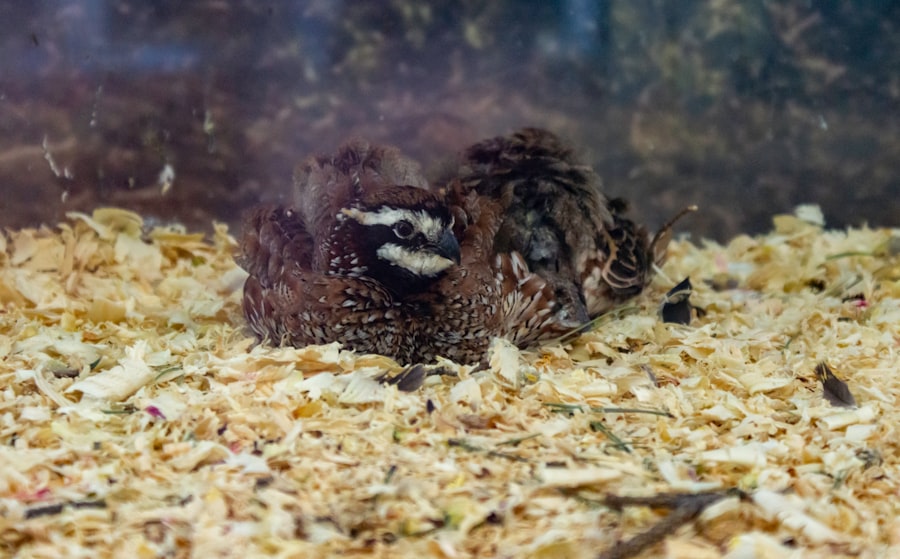
Californian quails are social birds that thrive in small flocks, making socialization an important aspect of their care. Providing plenty of space within the enclosure allows the birds to establish a natural pecking order and form social bonds with one another. It’s important to monitor the flock dynamics to ensure that all birds are getting along and not being bullied or excluded.
In addition to socialization, providing behavioral enrichment is essential for keeping Californian quails mentally stimulated and engaged. This can be achieved by offering a variety of perches, hiding spots, and natural vegetation within the enclosure. Additionally, providing toys or objects for the birds to peck at or interact with can help prevent boredom and encourage natural behaviors.
Foraging opportunities are also important for keeping quails mentally stimulated. Scatter feeding their daily ration of food throughout the enclosure encourages natural foraging behaviors and keeps the birds active and engaged. Additionally, offering live insects or mealworms can provide an additional source of mental stimulation as the birds hunt for their food.
Legal Considerations and Regulations
Before acquiring Californian quails, it’s important to be aware of any legal considerations or regulations that may apply to keeping these birds in your area. In some regions, a permit or license may be required to keep game birds such as quails in captivity. It’s important to research local laws and regulations regarding bird keeping before acquiring any quails.
Additionally, it’s important to consider the ethical implications of keeping quails in captivity. Ensuring that their housing and care meet ethical standards is essential for responsible bird keeping. This includes providing adequate space, enrichment, and socialization opportunities for the birds to thrive in captivity.
It’s also important to consider the potential impact on native wildlife if quails were to escape or be released into the wild. In some areas, non-native species like Californian quails can pose a threat to local ecosystems if they were to establish feral populations. Responsible ownership includes taking measures to prevent escape or release into the wild.
In conclusion, keeping Californian quails in captivity can be a rewarding experience for bird enthusiasts when done responsibly. Providing proper housing, nutrition, socialization, and veterinary care is essential for ensuring the health and well-being of these beautiful birds. By being aware of legal considerations and regulations, as well as ethical implications, bird keepers can enjoy the company of Californian quails while also being responsible stewards of their welfare.
If you’re interested in learning more about keeping Californian quail, you may also want to check out this informative article on creating the perfect chicken coop in Muskegon. The article provides valuable insights into designing a comfortable and secure living space for your quail, ensuring their well-being and productivity. You can read the full article here.
FAQs
What is the natural habitat of Californian quail?
Californian quail are native to western North America and can be found in a variety of habitats including grasslands, deserts, and foothills.
What do Californian quail eat?
Californian quail primarily feed on a diet of seeds, leaves, and insects. They are also known to consume small fruits and berries.
How do you keep Californian quail in captivity?
When keeping Californian quail in captivity, it is important to provide a spacious and secure enclosure with plenty of vegetation for cover. Additionally, a balanced diet of seeds, grains, and insects should be provided.
What are the key considerations for keeping Californian quail?
Key considerations for keeping Californian quail include providing a suitable habitat, ensuring a balanced diet, and taking measures to protect them from predators.
Are there any legal considerations for keeping Californian quail?
Before keeping Californian quail, it is important to check local regulations and obtain any necessary permits or licenses required for keeping these birds in captivity.
Meet Walter, the feathered-friend fanatic of Florida! Nestled in the sunshine state, Walter struts through life with his feathered companions, clucking his way to happiness. With a coop that’s fancier than a five-star hotel, he’s the Don Juan of the chicken world. When he’s not teaching his hens to do the cha-cha, you’ll find him in a heated debate with his prized rooster, Sir Clucks-a-Lot. Walter’s poultry passion is no yolk; he’s the sunny-side-up guy you never knew you needed in your flock of friends!

